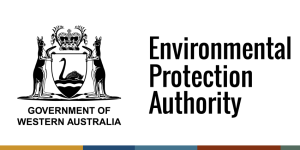The Joint Ore Reserve Committee’s (JORC) Code – which sets minimum disclosure standards for exploration results and reporting of mineral resources – is arguably the most important investor-facing document for the 706 resources companies listed on the ASX.
And a major overhaul is underway.
The Association of Mining and Exploration Companies (AMEC) convened this week for a lively debate about the industry’s once in a decade chance to get it right.
The structure of the all-important Table 1, proof of a Competent Person’s competency and reporting ESG risk dominated the conversation.
JORC’s representative at the forum, services lead partner for ERM, Graeme Jeffress, said that the updates put forward by the Committee were ultimately about catching the industry up with the times.
“It’s not just geos talking about rock chips anymore,” he said.
“There is a whole superstructure.
“If it’s material it can’t be invisible.”
In other news:
- AMEC debates the rationale behind ESG in the JORC Code
- Index shake-ups don’t paint a pretty picture – unless you’re in copper, gold
- MinRes receives FIRB approval for $1.3b haul road stake sale, provides business update
- FBR’s Hadrian X® completes first home in US demonstration program
- How Investor Insight can amplify your story
The miners had a different view. Odessey Gold (ASX: ODY) Non-executive Director Mathew Briggs reckoned the redefinition of Competent Persons and changes to Table 1 were as good as a death knell for juniors doing good work on shoestring budgets.
“We’re broadening the role of Competent Person to pseudo board member,” he said.
“Anything you put in black and white is going to hang you. The less you write, the less you have for lawyers to prosecute you with.”
At the end of the day, though, the Code is investor-facing, and shoring up investor confidence in the industry will ultimately make it easier for good companies to drill for equity.
Capital is always looking to back good projects, and it’s hoped the next iteration of the Code will make it much easier for investors to sort the wheat from the chaff.
One fund manager told Investor Insight the presenters sounded a lot like old men shaking their fists at the clouds.
Africa Down Under revisited – some highlights from last week:
- Cote d’Ivoire building out its mineral portfolio
- WA’s mining sector exporting regulatory know-how to African nations
- Amplify your story – so important
- South Africa to determine its own critical minerals path
- Note to explorers – always do what you say you are going to do and spend the money in the ground
Junior explorers rely on capital raisings to fund drill programs, and every dollar spent on legal consultants and cumbersome reporting requirements is one less dollar available for the drill bit.
It’s important to consider that about 40% of resources companies listed on the ASX have a market cap of less than $10 million and of those, 60% have a market cap of less than $5 million – that means the managing director is often the head geologist as well.
Mr Briggs quipped it’s never been a better time to be a Non-executive Director.
“We’re moving towards a society where evidence of something going wrong is evidence of failure by you,” he said.
“That’s my issue with Table 1.
“Young people are signing on to the liability of those boxes.
“And joint ventures… god help us all. Pushing an announcement through the 2012 Code is hard enough. We can’t afford full-time internal consultants, but that’s the way it’s going.”
Burnt Shirt Consulting director, Jeremy Peters, reckons it’s about time the Committee understood what it’s like for those on the ground.
“The committee is short of the people doing nuts and bolts stuff, designing mines, putting together ore reserve reports, and those doing the same for juniors,” he said.
“The code itself has gone from 44 to 52 pages, but there’s now 55 pages of guidance. So now it’s 152 pages, and more pages means there’s more opportunities for lawyers to have a field day.”
Mr Jeffress conceded this may have been an oversight.
“It’s a bit perverse that one of the reasons for providing more disclosure is to provide more protection, but as was pointed out the more you write the more you’re exposed,” he said.
“We’re all volunteers. We need more robust legal input on this from legal practitioners”
RSM National Head of Corporate Affairs, Nadine Marke, said from the independent experts’ point of view, an incomplete Table 1 would not be a snapshot in time that was sufficient for investors to make informed decisions.
“For us to come to an opinion in a point in time, we can’t rely on reporting from one year, two years ago. We’ll need more consultant time,” she said.
“There will definitely be more costs from the regulatory and compliance point of view.”
The other elephant in the room was incorporating ESG reporting into the Code. The was frustration about the perception that the Code was being politicised.
Mr Jeffress said that the Committee was looking into next decade for the industry.
“We were trying to be as light-touch as possible,” he said.
“There is clearly a Darwinian struggle going on to determine which framework becomes the global standard.”
“It’s an important topic. And you [companies] need to talk about what’s important for your projects.”
Atomic Group’s ESG Principal Steve Morgan took a more practical view with his hospital pass address, pointing out that 92% of global GDP is already under a net-zero pledge.
“That’s going to lead to a significant change in the flow of capital around the world,” he said.
“ESG is a product of global financial systems and it is a risk-based framework.”
“Any material risks must be disclosed, whether financial or ESG.
“Investors use this, and they want data.”
At the end of the day, this next iteration of the Code must balance investor confidence with the practicalities of mining and exploration.
Investors need to trust that the minimum standards of reporting have the interest of a free and fair market at heart.
But unless juniors can remain nimble and lean, it’s hard to see where the next decade of greenfeilds company-making discoveries will come from.
Having a clear message is important. Getting it out there is just as important. Contact the Investor Insight team to make sure your message is heard by your target audience.



